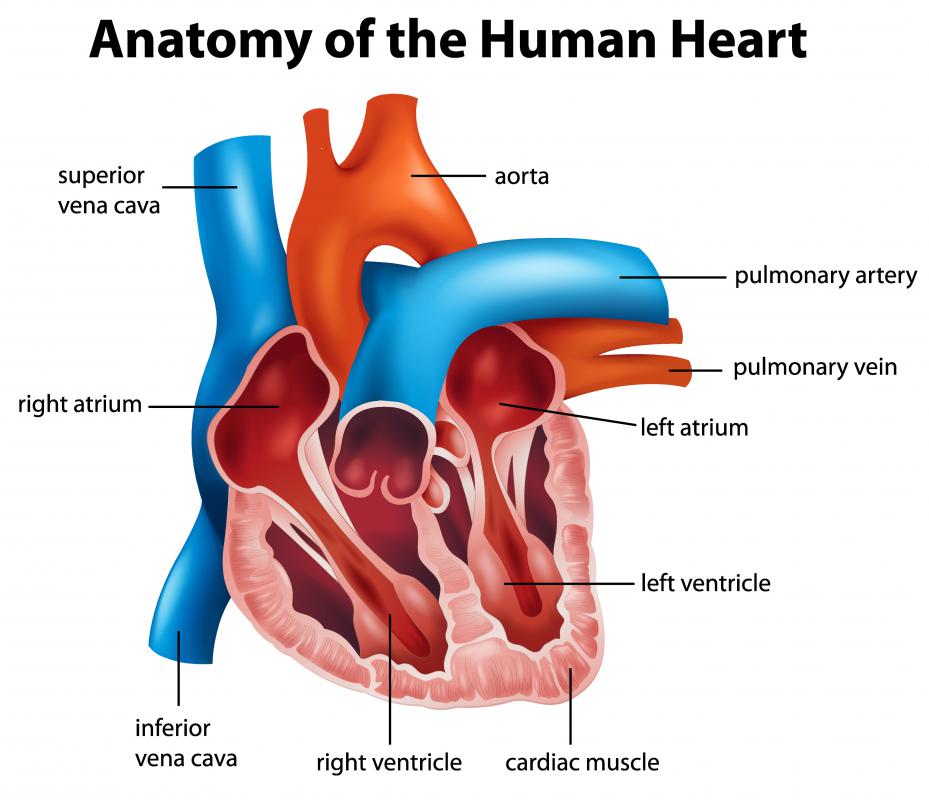At WiseGEEK, we're committed to delivering accurate, trustworthy information. Our expert-authored content is rigorously fact-checked and sourced from credible authorities. Discover how we uphold the highest standards in providing you with reliable knowledge.
What is Cardioplegia?
The expression, “to stop the heart,” is one normally associated with a tremendous scare or fear in general. In contrast to this, the idea of cardioplegia is a positive one, though anyone told they may undergo this is likely to have some anxiety. In the standard definition, cardioplegia is the purposeful stopping of the heart using generally cold temperature and chemicals, so that difficult surgeries can be performed on it. An alternate definition of this term is when the heart stops due to significant trauma, a far less common event.
Performing complex surgery on the heart was extremely difficult in the past, and much experimentation ultimately led to cardioplegia being developed at about the same time that heart lung bypass machines were being perfected. London doctor Dennis Melrose is credited with creating the final key to stopping the heart by coming up with an injection that could be used to effectively stop its function. Yet there are many doctors along the way who contributed to the sum total of knowledge required to evolve this technique. For instance, heart-lung bypass had to be developed at the same time, so that circulation of blood and oxygen could continue, even if the heart wasn’t beating. From a historical standpoint, these innovations allowed for “stopped heart” surgery beginning in the 1960s, greatly increasing the number of people who could have and survive heart surgery.

What occurs during cardioplegia may vary depending on surgeon preference. Most people are cooled down, after anesthesia is given, and clamping the aorta cuts off circulation to the heart. Circulation is rerouted to a heart-lung bypass machine. The surgeon gives an injection of a solution that fully stops the heart, creating “plegia” or paralysis. The essential purpose of inducing this state is to avoid life-threatening complications like development of blood clots or ischemia.

Of course, what gets accomplished in cardioplegia must be reversed after surgery has taken place. If hypothermia has been induced, the body is slowly warmed via a variety of methods, and when it is at the appropriate temperature, a shock is given to the heart to start beating. Removing the clamp from the aorta and removing the person from heart lung bypass restores normal circulation. In many circumstances, these difficult steps are performed with great ease, but there can be complications along the way.
In fact, though cardioplegia existed as the standard heart surgery method for nearly four decades, there are now many surgeons performing heart surgeries without it. A number of warm, beating heart surgeries are not preferred to fully inducing heart paralysis. Some of these are extremely complex, used to repair or palliate certain congenital heart defects. The extra-cardiac conduit Fontan is one example, and there are many more, including some forms of bypass or artery grafting. It’s possible that cardioplegia, which once made most heart surgeries possible, may some day be viewed as a technique that has outlived its usefulness, though it is still common today.
AS FEATURED ON:
AS FEATURED ON:












Discuss this Article
Post your comments